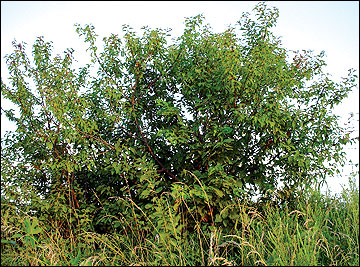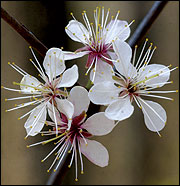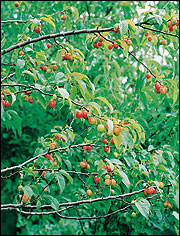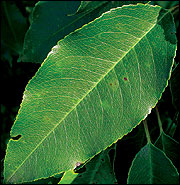American plum
- Prunus americana
- Wild plum
Woody
The dense foliage of wild plum offers good thermal refuge from intense summer heat.
Scott Sudkamp, Missouri Department of Conservation
Description
American plum occurs in woodlands, pastures and thickets throughout the Midwest. This species can grow as a small tree up to 20 feet high but more commonly occurs in colonies or thickets by sending up root suckers and shoots. The leaves are egg-shaped, simple and alternate. The twigs are slender and smooth and may have spurlike branches or thorns. The bark breaks into long, thin, scaly plates and is covered with lenticels. It is one of the first shrubs to bloom in spring with showy clusters of fragrant white flowers. The globe-shaped fruit is variable in size and ripens from July through September. Ripe fruits are red, sweet and desirable to wildlife, as they are to makers of jellies, preserves and pies.
Another species, Chickasaw plum (Prunus angustifolia), is common in the southern Great Plains.
Use by bobwhites
This species' most valuable attribute in quail habitat is as covey headquarters. The dense canopy of leaves in summer shades out plants on the ground, providing ideal loafing cover and escape from the heat of summer days. Twigs of multiple plants intertwine to provide excellent winter cover and an almost impenetrable barrier to predators. The fruit of American plum is eaten by many species of wildlife, including bobwhites.







